
Japanese traditional kimono Indicating the uniqueness of Etsy
The kimono is one of the symbols of Japan. This traditional type of Japanese clothing dates back to the 5th century and hasn't changed much since then. Basically, it is a T-shaped robe without buttons, which is fixed on the body with an obi belt (帯). The cut and principle of wearing the national dress of Japan are simple, and the richness of materials and the depth of meaning of the patterns.

Kimono japones negro Traditional Fashion, Traditional Dresses, Kimono Tradicional, Japan Kultur
31. Dragon. Vintage Silk Dragon Nagajuban, Japan Objects Store. This motif is more commonly found on boy's and men's kimono, though women began to wear dragon kimono as recently as the Taisho era (1912-1926). The dragon, like the phoenix, is a mythical beast whose legend was brought over from China.
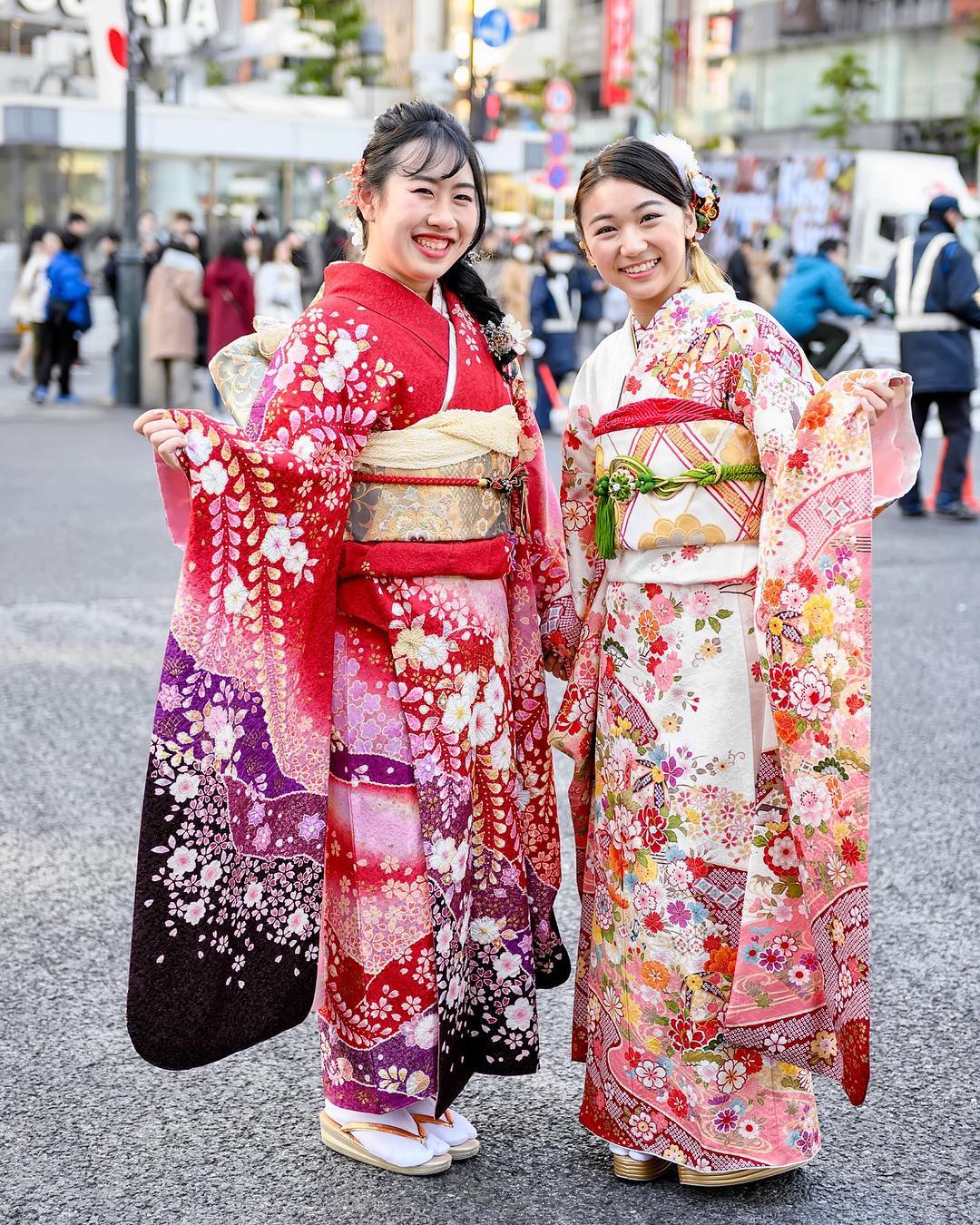
Tokyo Fashion Beautiful traditional Japanese furisode kimono on the streets of Shibuya, Tokyo
Kimono first appeared in the history 1300 years ago when the trading between China and Japan was getting prospered. After that, Japan had developed their original way of wearing Kimono. Noblewomen would wear "Juni-hitoe ", the ceremonial attire of a Japanese court lady (consisting originally of twelve layers of unlined kimono worn one on.

Hot sell Pink Japanese National Women Kimono Yukata With Obi Traditional Evening Dress Novelty
KIMONO: TRADITIONAL JAPANESE CLOTHING. Woman in kimono robes at meiji shrine. The Japanese word kimono is a modern term that appeared under the Meiji Restoration. Its meaning actually covers any type of clothing, which can be seen by looking at how it is written in Japanese.

MY FAVOURITE TRADITIONAL COSTUMES 1 Japanese traditional dress, Traditional japanese kimono
It became the traditional clothing around the late 700's, and everyone in Japan used to wear their Kimonos, all the time, men, women, and children. Since then, Kimono has undergone many changes. Historically, the type, quality, and design of a kimono were indicators of a person's social class and status. Samurai, nobility, and commoners.
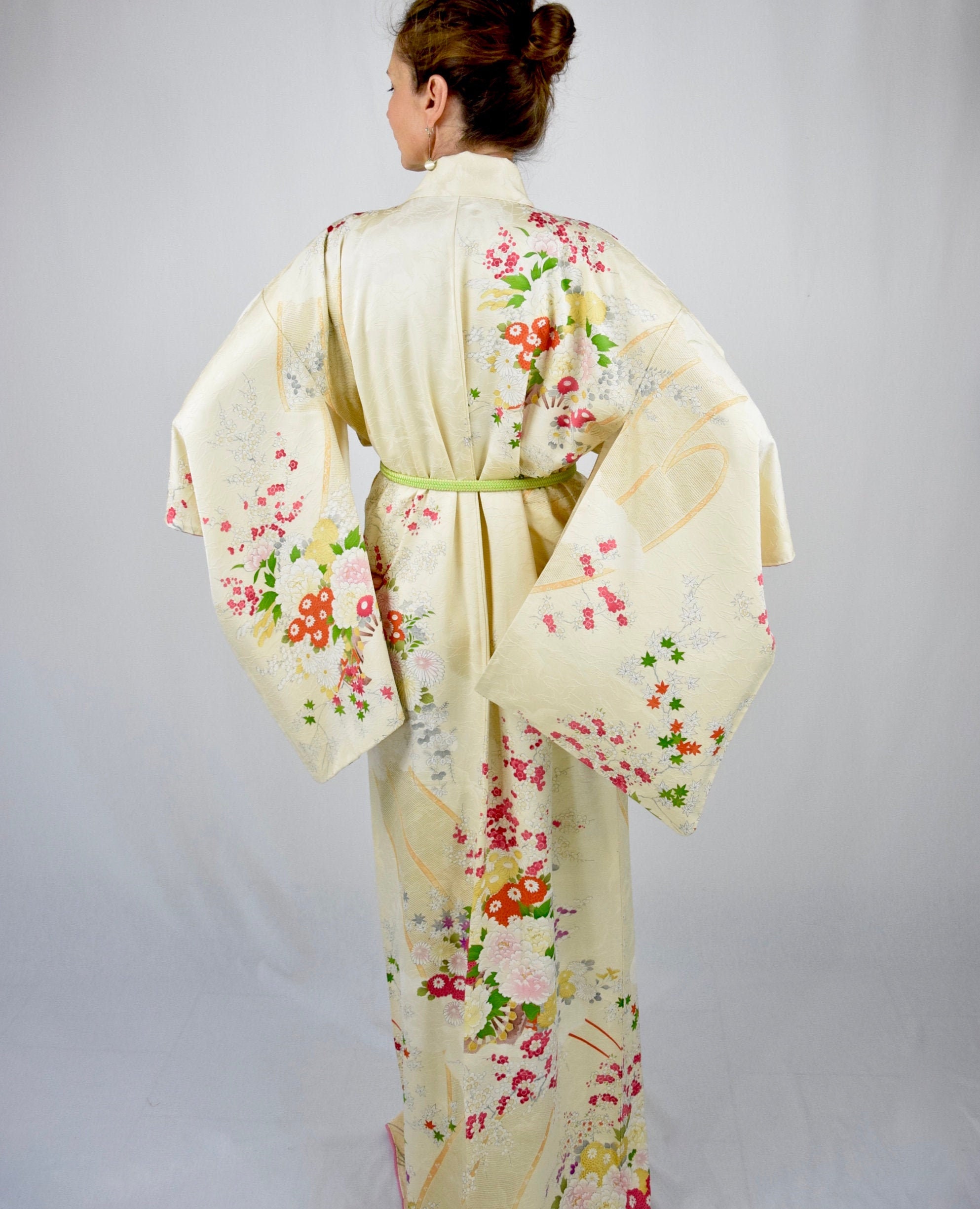
Japanese silk Kimono Robe with fancy embroidery including hand braided belt, Kaftan, Present
Kimonos are one of Japan's traditional handicrafts, and are very profoundly crafted one by one by craftsmen using traditional methods passed down from generation to generation. However, in recent years, due to the influence of anime and manga, there has been an increase in the number of kimonos of new genres such as retro, modern, and Taisho-roman, which are different from the classic patterns.
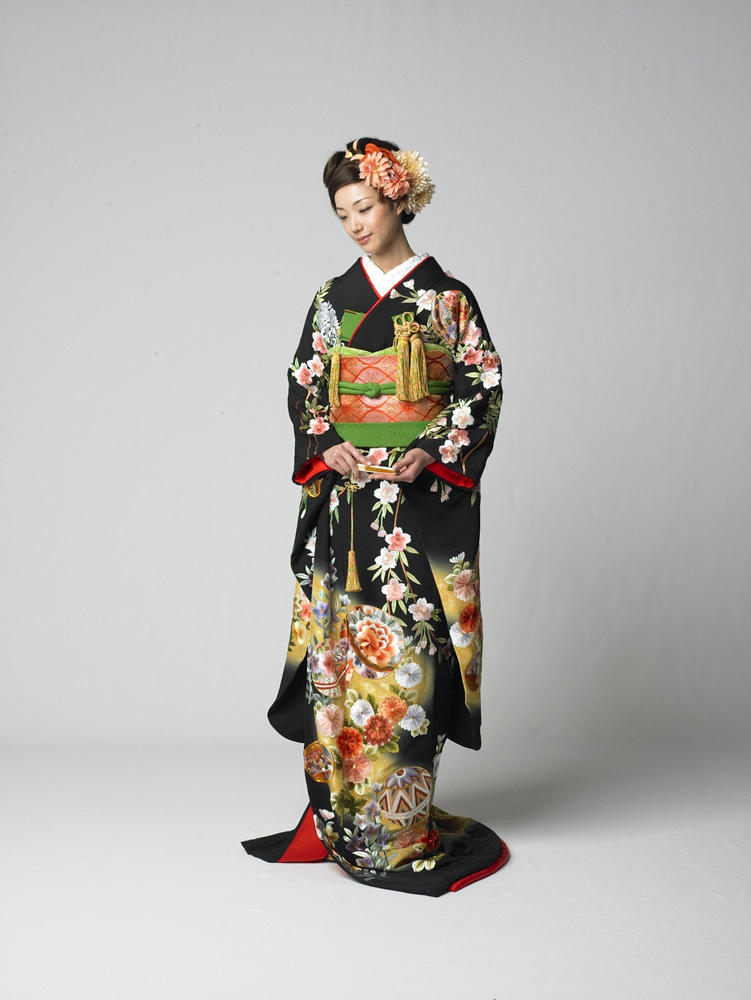
Nihongo ga Daisuki! Vestimenta tradicional. El Kimono
Houmongi 訪問着 are more formal kimono, often dyed with elaborate patterns resembling paintings that flow over the shoulder and sleeves or below the waist to the hemline. These are the "party dresses" of kimono, meant to be worn out to fancy events and be seen. Tomesode 留袖 are the most formal non-wedding kimono.

Kimono The quintessential hallmark of Japanese cultural identity! Clothes & Fashion
The kimono that the world associates with Japan was actually created in the late-nineteenth century as a cultural identifier. The icon indicates free access to the linked research on JSTOR. Kimono, in English, means "wearing thing.". But the garment everyone associates with Japan was not always called by that name.

kimono Traditional kimono, Traditional japanese kimono, Japanese kimono dress
Silk robes that came from China around the 3rd century. Japanese kimono (in other words, "gofuku") derived from the garments worn in China during the Wu dynasty. From 8th to 11th century, Japanese style of layering silk robes was established. The first-layer garment that was usually worn underneath all the robes is called kosode.
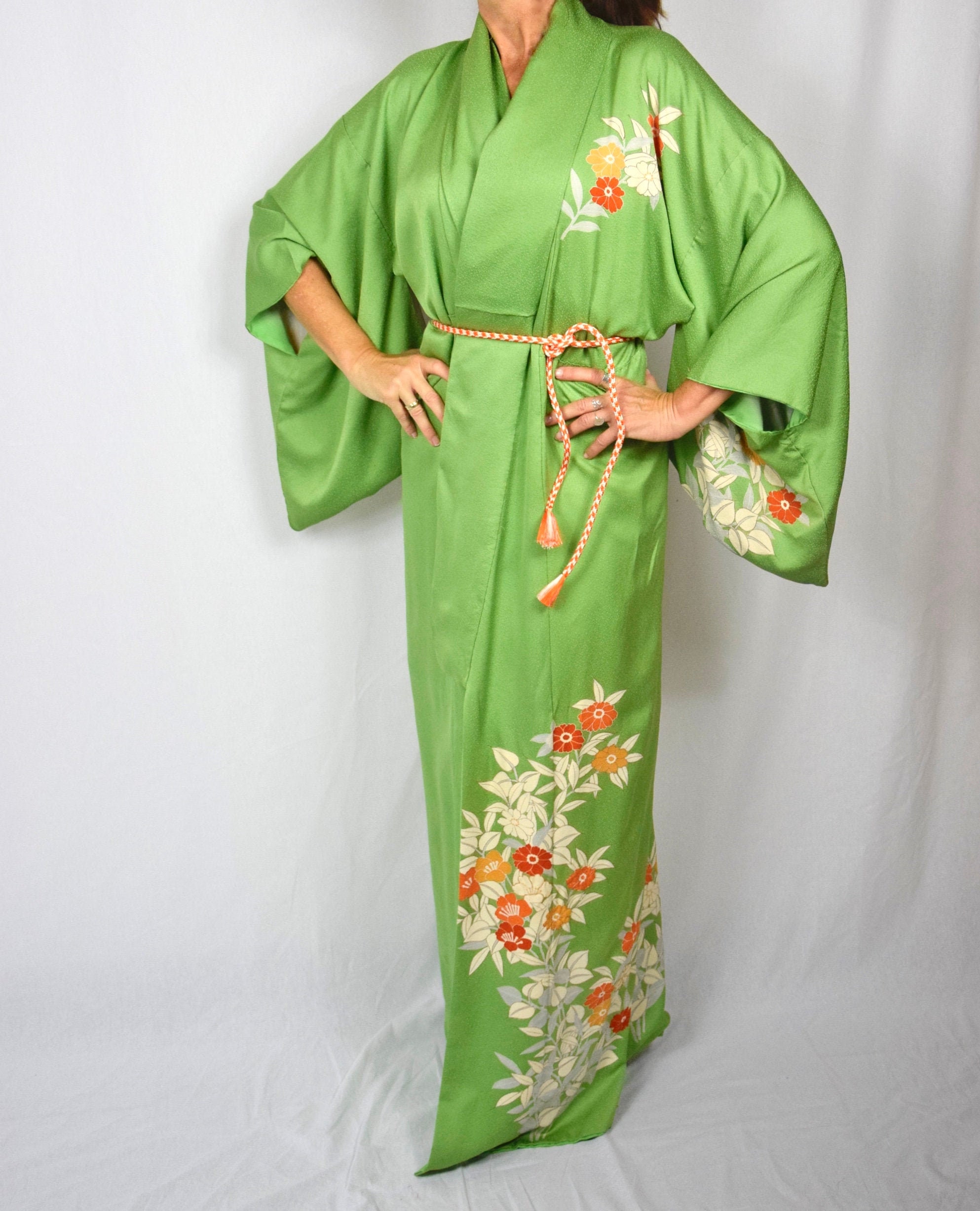
Japanese Vintage Kimono Robe in green silk with Obijime (Kumihimo) belt, Flower pattern Silk
What is a Kimono? Derived from the words ki ("wear") and mono ("thing"), the kimono is a traditional Japanese garment. Kimonos come in a range of styles and patterns. They are typically hand-sewn into a "T" shape from four single pieces of fabric called tans and tied with an obi, or belt.
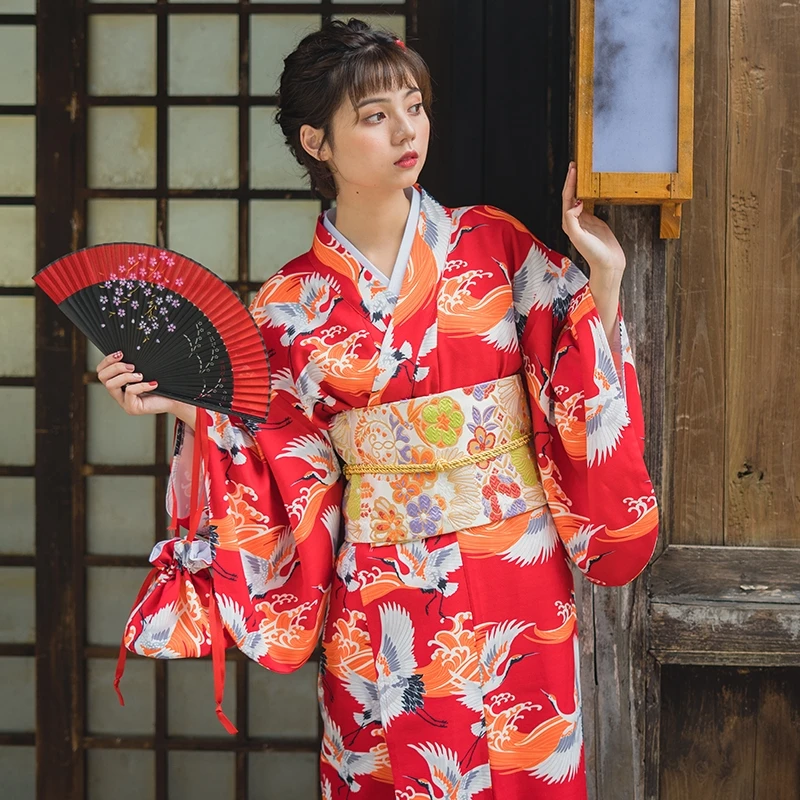
Japanese Kimono Traditional Dress Cosplay Female Yukata Women Haori Japan Geisha Costume Obi
The kimono (きもの/着物, lit. 'thing to wear') is a traditional Japanese garment and the national dress of Japan.The kimono is a wrapped-front garment with square sleeves and a rectangular body, and is worn left side wrapped over right, unless the wearer is deceased. The kimono is traditionally worn with a broad sash, called an obi, and is commonly worn with accessories such as zōri.

Japanese kimono, Vintage kimono, Japanese traditional dress
Kimono is known around the world as a representative traditional culture of Japan. Nowadays, there are fewer opportunities to see people wearing kimonos on the street, but many people still wear kimonos for special occasions such as New Year's, coming-of-age ceremonies, and weddings. This time, I would like to introduce Japanese kimono culture while looking back on its history.

The Kimono Gallery Kimono fashion, Japanese outfits, Traditional kimono
Buy Japanese Kimono, Traditional Japanese Clothing, Japanese Robes for men, women and kids. Highly curated for your occasion's needs. FREE Shipping nationwide! Operating and Shipping out of Easton PA 18042, USA. Call us or order by toll Free. 610.438.0632 {Mon - Fri 9am - 6pm} View Cart.

Buy New arrival japanese traditional kimonos dress women elegant kimonos ladies
25 Dec, 2023. The modern kimono was created around the 1600s and today is mainly worn on special occasions. The kimono is the most famous garment worn in Japan. Kimono literally means "thing to.

Pin on Traditional japanese kimono
Free 2-day Shipping on Millions of Items. No Membership Fee. Shop Now! Save on Apparel & Accessories nearby at Walmart®.

Kimono Tradicional Japones Yukata Obi Incluido 675.00 en Mercado Libre
Just about everyone is familiar with Japanese kimono: the beautiful and most recognizable traditional garments in Japan. What you may not know, however, is that "kimono," which literally means 'thing that is worn,' encompasses many styles, and can be worn for various occasions in Japan. From casual, lightweight yukata worn during summer festivals, to expensive, high-quality furisode.